Problem-Solving Method in Teaching
The problem-solving method is a highly effective teaching strategy that is designed to help students develop critical thinking skills and problem-solving abilities . It involves providing students with real-world problems and challenges that require them to apply their knowledge, skills, and creativity to find solutions. This method encourages active learning, promotes collaboration, and allows students to take ownership of their learning.

Table of Contents
Definition of problem-solving method.
Problem-solving is a process of identifying, analyzing, and resolving problems. The problem-solving method in teaching involves providing students with real-world problems that they must solve through collaboration and critical thinking. This method encourages students to apply their knowledge and creativity to develop solutions that are effective and practical.
Meaning of Problem-Solving Method
The meaning and Definition of problem-solving are given by different Scholars. These are-
Woodworth and Marquis(1948) : Problem-solving behavior occurs in novel or difficult situations in which a solution is not obtainable by the habitual methods of applying concepts and principles derived from past experience in very similar situations.
Skinner (1968): Problem-solving is a process of overcoming difficulties that appear to interfere with the attainment of a goal. It is the procedure of making adjustments in spite of interference
Benefits of Problem-Solving Method
The problem-solving method has several benefits for both students and teachers. These benefits include:
- Encourages active learning: The problem-solving method encourages students to actively participate in their own learning by engaging them in real-world problems that require critical thinking and collaboration
- Promotes collaboration: Problem-solving requires students to work together to find solutions. This promotes teamwork, communication, and cooperation.
- Builds critical thinking skills: The problem-solving method helps students develop critical thinking skills by providing them with opportunities to analyze and evaluate problems
- Increases motivation: When students are engaged in solving real-world problems, they are more motivated to learn and apply their knowledge.
- Enhances creativity: The problem-solving method encourages students to be creative in finding solutions to problems.
Steps in Problem-Solving Method
The problem-solving method involves several steps that teachers can use to guide their students. These steps include
- Identifying the problem: The first step in problem-solving is identifying the problem that needs to be solved. Teachers can present students with a real-world problem or challenge that requires critical thinking and collaboration.
- Analyzing the problem: Once the problem is identified, students should analyze it to determine its scope and underlying causes.
- Generating solutions: After analyzing the problem, students should generate possible solutions. This step requires creativity and critical thinking.
- Evaluating solutions: The next step is to evaluate each solution based on its effectiveness and practicality
- Selecting the best solution: The final step is to select the best solution and implement it.
Verification of the concluded solution or Hypothesis
The solution arrived at or the conclusion drawn must be further verified by utilizing it in solving various other likewise problems. In case, the derived solution helps in solving these problems, then and only then if one is free to agree with his finding regarding the solution. The verified solution may then become a useful product of his problem-solving behavior that can be utilized in solving further problems. The above steps can be utilized in solving various problems thereby fostering creative thinking ability in an individual.
The problem-solving method is an effective teaching strategy that promotes critical thinking, creativity, and collaboration. It provides students with real-world problems that require them to apply their knowledge and skills to find solutions. By using the problem-solving method, teachers can help their students develop the skills they need to succeed in school and in life.
- Jonassen, D. (2011). Learning to solve problems: A handbook for designing problem-solving learning environments. Routledge.
- Hmelo-Silver, C. E. (2004). Problem-based learning: What and how do students learn? Educational Psychology Review, 16(3), 235-266.
- Mergendoller, J. R., Maxwell, N. L., & Bellisimo, Y. (2006). The effectiveness of problem-based instruction: A comparative study of instructional methods and student characteristics. Interdisciplinary Journal of Problem-based Learning, 1(2), 49-69.
- Richey, R. C., Klein, J. D., & Tracey, M. W. (2011). The instructional design knowledge base: Theory, research, and practice. Routledge.
- Savery, J. R., & Duffy, T. M. (2001). Problem-based learning: An instructional model and its constructivist framework. CRLT Technical Report No. 16-01, University of Michigan. Wojcikowski, J. (2013). Solving real-world problems through problem-based learning. College Teaching, 61(4), 153-156
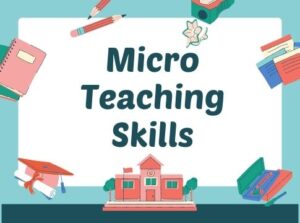
Center for Teaching
Teaching problem solving.
Print Version
Tips and Techniques
Expert vs. novice problem solvers, communicate.
- Have students identify specific problems, difficulties, or confusions . Don’t waste time working through problems that students already understand.
- If students are unable to articulate their concerns, determine where they are having trouble by asking them to identify the specific concepts or principles associated with the problem.
- In a one-on-one tutoring session, ask the student to work his/her problem out loud . This slows down the thinking process, making it more accurate and allowing you to access understanding.
- When working with larger groups you can ask students to provide a written “two-column solution.” Have students write up their solution to a problem by putting all their calculations in one column and all of their reasoning (in complete sentences) in the other column. This helps them to think critically about their own problem solving and helps you to more easily identify where they may be having problems. Two-Column Solution (Math) Two-Column Solution (Physics)
Encourage Independence
- Model the problem solving process rather than just giving students the answer. As you work through the problem, consider how a novice might struggle with the concepts and make your thinking clear
- Have students work through problems on their own. Ask directing questions or give helpful suggestions, but provide only minimal assistance and only when needed to overcome obstacles.
- Don’t fear group work ! Students can frequently help each other, and talking about a problem helps them think more critically about the steps needed to solve the problem. Additionally, group work helps students realize that problems often have multiple solution strategies, some that might be more effective than others
Be sensitive
- Frequently, when working problems, students are unsure of themselves. This lack of confidence may hamper their learning. It is important to recognize this when students come to us for help, and to give each student some feeling of mastery. Do this by providing positive reinforcement to let students know when they have mastered a new concept or skill.
Encourage Thoroughness and Patience
- Try to communicate that the process is more important than the answer so that the student learns that it is OK to not have an instant solution. This is learned through your acceptance of his/her pace of doing things, through your refusal to let anxiety pressure you into giving the right answer, and through your example of problem solving through a step-by step process.
Experts (teachers) in a particular field are often so fluent in solving problems from that field that they can find it difficult to articulate the problem solving principles and strategies they use to novices (students) in their field because these principles and strategies are second nature to the expert. To teach students problem solving skills, a teacher should be aware of principles and strategies of good problem solving in his or her discipline .
The mathematician George Polya captured the problem solving principles and strategies he used in his discipline in the book How to Solve It: A New Aspect of Mathematical Method (Princeton University Press, 1957). The book includes a summary of Polya’s problem solving heuristic as well as advice on the teaching of problem solving.

Teaching Guides
- Online Course Development Resources
- Principles & Frameworks
- Pedagogies & Strategies
- Reflecting & Assessing
- Challenges & Opportunities
- Populations & Contexts
Quick Links
- Services for Departments and Schools
- Examples of Online Instructional Modules
Teaching Problem-Solving Skills
Many instructors design opportunities for students to solve “problems”. But are their students solving true problems or merely participating in practice exercises? The former stresses critical thinking and decision making skills whereas the latter requires only the application of previously learned procedures.
Problem solving is often broadly defined as "the ability to understand the environment, identify complex problems, review related information to develop, evaluate strategies and implement solutions to build the desired outcome" (Fissore, C. et al, 2021). True problem solving is the process of applying a method – not known in advance – to a problem that is subject to a specific set of conditions and that the problem solver has not seen before, in order to obtain a satisfactory solution.
Below you will find some basic principles for teaching problem solving and one model to implement in your classroom teaching.
Principles for teaching problem solving
- Model a useful problem-solving method . Problem solving can be difficult and sometimes tedious. Show students how to be patient and persistent, and how to follow a structured method, such as Woods’ model described below. Articulate your method as you use it so students see the connections.
- Teach within a specific context . Teach problem-solving skills in the context in which they will be used by students (e.g., mole fraction calculations in a chemistry course). Use real-life problems in explanations, examples, and exams. Do not teach problem solving as an independent, abstract skill.
- Help students understand the problem . In order to solve problems, students need to define the end goal. This step is crucial to successful learning of problem-solving skills. If you succeed at helping students answer the questions “what?” and “why?”, finding the answer to “how?” will be easier.
- Take enough time . When planning a lecture/tutorial, budget enough time for: understanding the problem and defining the goal (both individually and as a class); dealing with questions from you and your students; making, finding, and fixing mistakes; and solving entire problems in a single session.
- Ask questions and make suggestions . Ask students to predict “what would happen if …” or explain why something happened. This will help them to develop analytical and deductive thinking skills. Also, ask questions and make suggestions about strategies to encourage students to reflect on the problem-solving strategies that they use.
- Link errors to misconceptions . Use errors as evidence of misconceptions, not carelessness or random guessing. Make an effort to isolate the misconception and correct it, then teach students to do this by themselves. We can all learn from mistakes.
Woods’ problem-solving model
Define the problem.
- The system . Have students identify the system under study (e.g., a metal bridge subject to certain forces) by interpreting the information provided in the problem statement. Drawing a diagram is a great way to do this.
- Known(s) and concepts . List what is known about the problem, and identify the knowledge needed to understand (and eventually) solve it.
- Unknown(s) . Once you have a list of knowns, identifying the unknown(s) becomes simpler. One unknown is generally the answer to the problem, but there may be other unknowns. Be sure that students understand what they are expected to find.
- Units and symbols . One key aspect in problem solving is teaching students how to select, interpret, and use units and symbols. Emphasize the use of units whenever applicable. Develop a habit of using appropriate units and symbols yourself at all times.
- Constraints . All problems have some stated or implied constraints. Teach students to look for the words "only", "must", "neglect", or "assume" to help identify the constraints.
- Criteria for success . Help students consider, from the beginning, what a logical type of answer would be. What characteristics will it possess? For example, a quantitative problem will require an answer in some form of numerical units (e.g., $/kg product, square cm, etc.) while an optimization problem requires an answer in the form of either a numerical maximum or minimum.
Think about it
- “Let it simmer”. Use this stage to ponder the problem. Ideally, students will develop a mental image of the problem at hand during this stage.
- Identify specific pieces of knowledge . Students need to determine by themselves the required background knowledge from illustrations, examples and problems covered in the course.
- Collect information . Encourage students to collect pertinent information such as conversion factors, constants, and tables needed to solve the problem.
Plan a solution
- Consider possible strategies . Often, the type of solution will be determined by the type of problem. Some common problem-solving strategies are: compute; simplify; use an equation; make a model, diagram, table, or chart; or work backwards.
- Choose the best strategy . Help students to choose the best strategy by reminding them again what they are required to find or calculate.
Carry out the plan
- Be patient . Most problems are not solved quickly or on the first attempt. In other cases, executing the solution may be the easiest step.
- Be persistent . If a plan does not work immediately, do not let students get discouraged. Encourage them to try a different strategy and keep trying.
Encourage students to reflect. Once a solution has been reached, students should ask themselves the following questions:
- Does the answer make sense?
- Does it fit with the criteria established in step 1?
- Did I answer the question(s)?
- What did I learn by doing this?
- Could I have done the problem another way?
If you would like support applying these tips to your own teaching, CTE staff members are here to help. View the CTE Support page to find the most relevant staff member to contact.
- Fissore, C., Marchisio, M., Roman, F., & Sacchet, M. (2021). Development of problem solving skills with Maple in higher education. In: Corless, R.M., Gerhard, J., Kotsireas, I.S. (eds) Maple in Mathematics Education and Research. MC 2020. Communications in Computer and Information Science, vol 1414. Springer, Cham. https://doi.org/10.1007/978-3-030-81698-8_15
- Foshay, R., & Kirkley, J. (1998). Principles for Teaching Problem Solving. TRO Learning Inc., Edina MN. (PDF) Principles for Teaching Problem Solving (researchgate.net)
- Hayes, J.R. (1989). The Complete Problem Solver. 2nd Edition. Hillsdale, NJ: Lawrence Erlbaum Associates.
- Woods, D.R., Wright, J.D., Hoffman, T.W., Swartman, R.K., Doig, I.D. (1975). Teaching Problem solving Skills.
- Engineering Education. Vol 1, No. 1. p. 238. Washington, DC: The American Society for Engineering Education.
Catalog search
Teaching tip categories.
- Assessment and feedback
- Blended Learning and Educational Technologies
- Career Development
- Course Design
- Course Implementation
- Inclusive Teaching and Learning
- Learning activities
- Support for Student Learning
- Support for TAs
- Learning activities ,
- Illinois Online
- Illinois Remote
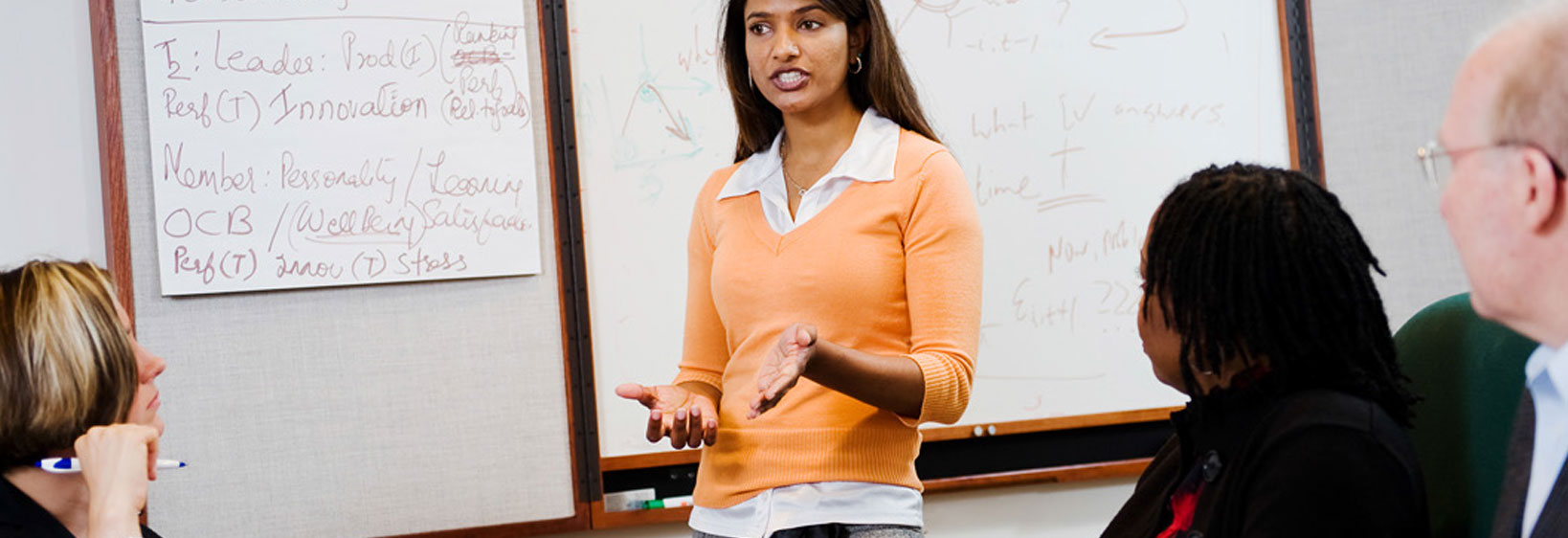
- TA Resources
- Teaching Consultation
- Teaching Portfolio Program
- Grad Academy for College Teaching
- Faculty Events
- The Art of Teaching
- 2022 Illinois Summer Teaching Institute
- Large Classes
- Leading Discussions
- Laboratory Classes
- Lecture-Based Classes
- Planning a Class Session
- Questioning Strategies
- Classroom Assessment Techniques (CATs)
- Problem-Based Learning (PBL)
- The Case Method
- Community-Based Learning: Service Learning
- Group Learning
- Just-in-Time Teaching
- Creating a Syllabus
- Motivating Students
- Dealing With Cheating
- Discouraging & Detecting Plagiarism
- Diversity & Creating an Inclusive Classroom
- Harassment & Discrimination
- Professional Conduct
- Foundations of Good Teaching
- Student Engagement
- Assessment Strategies
- Course Design
- Student Resources
- Teaching Tips
- Graduate Teacher Certificate
- Certificate in Foundations of Teaching
- Teacher Scholar Certificate
- Certificate in Technology-Enhanced Teaching
- Master Course in Online Teaching (MCOT)
- 2022 Celebration of College Teaching
- 2023 Celebration of College Teaching
- Hybrid Teaching and Learning Certificate
- Classroom Observation Etiquette
- Teaching Philosophy Statement
- Pedagogical Literature Review
- Scholarship of Teaching and Learning
- Instructor Stories
- Podcast: Teach Talk Listen Learn
- Universal Design for Learning
Sign-Up to receive Teaching and Learning news and events
Problem-Based Learning (PBL) is a teaching method in which complex real-world problems are used as the vehicle to promote student learning of concepts and principles as opposed to direct presentation of facts and concepts. In addition to course content, PBL can promote the development of critical thinking skills, problem-solving abilities, and communication skills. It can also provide opportunities for working in groups, finding and evaluating research materials, and life-long learning (Duch et al, 2001).
PBL can be incorporated into any learning situation. In the strictest definition of PBL, the approach is used over the entire semester as the primary method of teaching. However, broader definitions and uses range from including PBL in lab and design classes, to using it simply to start a single discussion. PBL can also be used to create assessment items. The main thread connecting these various uses is the real-world problem.
Any subject area can be adapted to PBL with a little creativity. While the core problems will vary among disciplines, there are some characteristics of good PBL problems that transcend fields (Duch, Groh, and Allen, 2001):
- The problem must motivate students to seek out a deeper understanding of concepts.
- The problem should require students to make reasoned decisions and to defend them.
- The problem should incorporate the content objectives in such a way as to connect it to previous courses/knowledge.
- If used for a group project, the problem needs a level of complexity to ensure that the students must work together to solve it.
- If used for a multistage project, the initial steps of the problem should be open-ended and engaging to draw students into the problem.
The problems can come from a variety of sources: newspapers, magazines, journals, books, textbooks, and television/ movies. Some are in such form that they can be used with little editing; however, others need to be rewritten to be of use. The following guidelines from The Power of Problem-Based Learning (Duch et al, 2001) are written for creating PBL problems for a class centered around the method; however, the general ideas can be applied in simpler uses of PBL:
- Choose a central idea, concept, or principle that is always taught in a given course, and then think of a typical end-of-chapter problem, assignment, or homework that is usually assigned to students to help them learn that concept. List the learning objectives that students should meet when they work through the problem.
- Think of a real-world context for the concept under consideration. Develop a storytelling aspect to an end-of-chapter problem, or research an actual case that can be adapted, adding some motivation for students to solve the problem. More complex problems will challenge students to go beyond simple plug-and-chug to solve it. Look at magazines, newspapers, and articles for ideas on the story line. Some PBL practitioners talk to professionals in the field, searching for ideas of realistic applications of the concept being taught.
- What will the first page (or stage) look like? What open-ended questions can be asked? What learning issues will be identified?
- How will the problem be structured?
- How long will the problem be? How many class periods will it take to complete?
- Will students be given information in subsequent pages (or stages) as they work through the problem?
- What resources will the students need?
- What end product will the students produce at the completion of the problem?
- Write a teacher's guide detailing the instructional plans on using the problem in the course. If the course is a medium- to large-size class, a combination of mini-lectures, whole-class discussions, and small group work with regular reporting may be necessary. The teacher's guide can indicate plans or options for cycling through the pages of the problem interspersing the various modes of learning.
- The final step is to identify key resources for students. Students need to learn to identify and utilize learning resources on their own, but it can be helpful if the instructor indicates a few good sources to get them started. Many students will want to limit their research to the Internet, so it will be important to guide them toward the library as well.
The method for distributing a PBL problem falls under three closely related teaching techniques: case studies, role-plays, and simulations. Case studies are presented to students in written form. Role-plays have students improvise scenes based on character descriptions given. Today, simulations often involve computer-based programs. Regardless of which technique is used, the heart of the method remains the same: the real-world problem.
Where can I learn more?
- PBL through the Institute for Transforming Undergraduate Education at the University of Delaware
- Duch, B. J., Groh, S. E, & Allen, D. E. (Eds.). (2001). The power of problem-based learning . Sterling, VA: Stylus.
- Grasha, A. F. (1996). Teaching with style: A practical guide to enhancing learning by understanding teaching and learning styles. Pittsburgh: Alliance Publishers.
Center for Innovation in Teaching & Learning
249 Armory Building 505 East Armory Avenue Champaign, IL 61820
217 333-1462
Email: [email protected]
Office of the Provost
- Faculty & Staff
Teaching problem solving
Strategies for teaching problem solving apply across disciplines and instructional contexts. First, introduce the problem and explain how people in your discipline generally make sense of the given information. Then, explain how to apply these approaches to solve the problem.
Introducing the problem
Explaining how people in your discipline understand and interpret these types of problems can help students develop the skills they need to understand the problem (and find a solution). After introducing how you would go about solving a problem, you could then ask students to:
- frame the problem in their own words
- define key terms and concepts
- determine statements that accurately represent the givens of a problem
- identify analogous problems
- determine what information is needed to solve the problem
Working on solutions
In the solution phase, one develops and then implements a coherent plan for solving the problem. As you help students with this phase, you might ask them to:
- identify the general model or procedure they have in mind for solving the problem
- set sub-goals for solving the problem
- identify necessary operations and steps
- draw conclusions
- carry out necessary operations
You can help students tackle a problem effectively by asking them to:
- systematically explain each step and its rationale
- explain how they would approach solving the problem
- help you solve the problem by posing questions at key points in the process
- work together in small groups (3 to 5 students) to solve the problem and then have the solution presented to the rest of the class (either by you or by a student in the group)
In all cases, the more you get the students to articulate their own understandings of the problem and potential solutions, the more you can help them develop their expertise in approaching problems in your discipline.
Center for Teaching Innovation
Resource library.
- Getting Started with Establishing Ground Rules
- Sample group work rubric
- Problem-Based Learning Clearinghouse of Activities, University of Delaware
Problem-Based Learning
Problem-based learning (PBL) is a student-centered approach in which students learn about a subject by working in groups to solve an open-ended problem. This problem is what drives the motivation and the learning.
Why Use Problem-Based Learning?
Nilson (2010) lists the following learning outcomes that are associated with PBL. A well-designed PBL project provides students with the opportunity to develop skills related to:
- Working in teams.
- Managing projects and holding leadership roles.
- Oral and written communication.
- Self-awareness and evaluation of group processes.
- Working independently.
- Critical thinking and analysis.
- Explaining concepts.
- Self-directed learning.
- Applying course content to real-world examples.
- Researching and information literacy.
- Problem solving across disciplines.
Considerations for Using Problem-Based Learning
Rather than teaching relevant material and subsequently having students apply the knowledge to solve problems, the problem is presented first. PBL assignments can be short, or they can be more involved and take a whole semester. PBL is often group-oriented, so it is beneficial to set aside classroom time to prepare students to work in groups and to allow them to engage in their PBL project.
Students generally must:
- Examine and define the problem.
- Explore what they already know about underlying issues related to it.
- Determine what they need to learn and where they can acquire the information and tools necessary to solve the problem.
- Evaluate possible ways to solve the problem.
- Solve the problem.
- Report on their findings.
Getting Started with Problem-Based Learning
- Articulate the learning outcomes of the project. What do you want students to know or be able to do as a result of participating in the assignment?
- Create the problem. Ideally, this will be a real-world situation that resembles something students may encounter in their future careers or lives. Cases are often the basis of PBL activities. Previously developed PBL activities can be found online through the University of Delaware’s PBL Clearinghouse of Activities .
- Establish ground rules at the beginning to prepare students to work effectively in groups.
- Introduce students to group processes and do some warm up exercises to allow them to practice assessing both their own work and that of their peers.
- Consider having students take on different roles or divide up the work up amongst themselves. Alternatively, the project might require students to assume various perspectives, such as those of government officials, local business owners, etc.
- Establish how you will evaluate and assess the assignment. Consider making the self and peer assessments a part of the assignment grade.
Nilson, L. B. (2010). Teaching at its best: A research-based resource for college instructors (2nd ed.). San Francisco, CA: Jossey-Bass.

Want to create or adapt books like this? Learn more about how Pressbooks supports open publishing practices.
5 Teaching Mathematics Through Problem Solving
Janet Stramel

In his book “How to Solve It,” George Pólya (1945) said, “One of the most important tasks of the teacher is to help his students. This task is not quite easy; it demands time, practice, devotion, and sound principles. The student should acquire as much experience of independent work as possible. But if he is left alone with his problem without any help, he may make no progress at all. If the teacher helps too much, nothing is left to the student. The teacher should help, but not too much and not too little, so that the student shall have a reasonable share of the work.” (page 1)
What is a problem in mathematics? A problem is “any task or activity for which the students have no prescribed or memorized rules or methods, nor is there a perception by students that there is a specific ‘correct’ solution method” (Hiebert, et. al., 1997). Problem solving in mathematics is one of the most important topics to teach; learning to problem solve helps students develop a sense of solving real-life problems and apply mathematics to real world situations. It is also used for a deeper understanding of mathematical concepts. Learning “math facts” is not enough; students must also learn how to use these facts to develop their thinking skills.
According to NCTM (2010), the term “problem solving” refers to mathematical tasks that have the potential to provide intellectual challenges for enhancing students’ mathematical understanding and development. When you first hear “problem solving,” what do you think about? Story problems or word problems? Story problems may be limited to and not “problematic” enough. For example, you may ask students to find the area of a rectangle, given the length and width. This type of problem is an exercise in computation and can be completed mindlessly without understanding the concept of area. Worthwhile problems includes problems that are truly problematic and have the potential to provide contexts for students’ mathematical development.
There are three ways to solve problems: teaching for problem solving, teaching about problem solving, and teaching through problem solving.
Teaching for problem solving begins with learning a skill. For example, students are learning how to multiply a two-digit number by a one-digit number, and the story problems you select are multiplication problems. Be sure when you are teaching for problem solving, you select or develop tasks that can promote the development of mathematical understanding.
Teaching about problem solving begins with suggested strategies to solve a problem. For example, “draw a picture,” “make a table,” etc. You may see posters in teachers’ classrooms of the “Problem Solving Method” such as: 1) Read the problem, 2) Devise a plan, 3) Solve the problem, and 4) Check your work. There is little or no evidence that students’ problem-solving abilities are improved when teaching about problem solving. Students will see a word problem as a separate endeavor and focus on the steps to follow rather than the mathematics. In addition, students will tend to use trial and error instead of focusing on sense making.
Teaching through problem solving focuses students’ attention on ideas and sense making and develops mathematical practices. Teaching through problem solving also develops a student’s confidence and builds on their strengths. It allows for collaboration among students and engages students in their own learning.
Consider the following worthwhile-problem criteria developed by Lappan and Phillips (1998):
- The problem has important, useful mathematics embedded in it.
- The problem requires high-level thinking and problem solving.
- The problem contributes to the conceptual development of students.
- The problem creates an opportunity for the teacher to assess what his or her students are learning and where they are experiencing difficulty.
- The problem can be approached by students in multiple ways using different solution strategies.
- The problem has various solutions or allows different decisions or positions to be taken and defended.
- The problem encourages student engagement and discourse.
- The problem connects to other important mathematical ideas.
- The problem promotes the skillful use of mathematics.
- The problem provides an opportunity to practice important skills.
Of course, not every problem will include all of the above. Sometimes, you will choose a problem because your students need an opportunity to practice a certain skill.
Key features of a good mathematics problem includes:
- It must begin where the students are mathematically.
- The feature of the problem must be the mathematics that students are to learn.
- It must require justifications and explanations for both answers and methods of solving.

Problem solving is not a neat and orderly process. Think about needlework. On the front side, it is neat and perfect and pretty.

But look at the b ack.
It is messy and full of knots and loops. Problem solving in mathematics is also like this and we need to help our students be “messy” with problem solving; they need to go through those knots and loops and learn how to solve problems with the teacher’s guidance.
When you teach through problem solving , your students are focused on ideas and sense-making and they develop confidence in mathematics!
Mathematics Tasks and Activities that Promote Teaching through Problem Solving

Choosing the Right Task
Selecting activities and/or tasks is the most significant decision teachers make that will affect students’ learning. Consider the following questions:
- Teachers must do the activity first. What is problematic about the activity? What will you need to do BEFORE the activity and AFTER the activity? Additionally, think how your students would do the activity.
- What mathematical ideas will the activity develop? Are there connections to other related mathematics topics, or other content areas?
- Can the activity accomplish your learning objective/goals?

Low Floor High Ceiling Tasks
By definition, a “ low floor/high ceiling task ” is a mathematical activity where everyone in the group can begin and then work on at their own level of engagement. Low Floor High Ceiling Tasks are activities that everyone can begin and work on based on their own level, and have many possibilities for students to do more challenging mathematics. One gauge of knowing whether an activity is a Low Floor High Ceiling Task is when the work on the problems becomes more important than the answer itself, and leads to rich mathematical discourse [Hover: ways of representing, thinking, talking, agreeing, and disagreeing; the way ideas are exchanged and what the ideas entail; and as being shaped by the tasks in which students engage as well as by the nature of the learning environment].
The strengths of using Low Floor High Ceiling Tasks:
- Allows students to show what they can do, not what they can’t.
- Provides differentiation to all students.
- Promotes a positive classroom environment.
- Advances a growth mindset in students
- Aligns with the Standards for Mathematical Practice
Examples of some Low Floor High Ceiling Tasks can be found at the following sites:
- YouCubed – under grades choose Low Floor High Ceiling
- NRICH Creating a Low Threshold High Ceiling Classroom
- Inside Mathematics Problems of the Month
Math in 3-Acts
Math in 3-Acts was developed by Dan Meyer to spark an interest in and engage students in thought-provoking mathematical inquiry. Math in 3-Acts is a whole-group mathematics task consisting of three distinct parts:
Act One is about noticing and wondering. The teacher shares with students an image, video, or other situation that is engaging and perplexing. Students then generate questions about the situation.
In Act Two , the teacher offers some information for the students to use as they find the solutions to the problem.
Act Three is the “reveal.” Students share their thinking as well as their solutions.
“Math in 3 Acts” is a fun way to engage your students, there is a low entry point that gives students confidence, there are multiple paths to a solution, and it encourages students to work in groups to solve the problem. Some examples of Math in 3-Acts can be found at the following websites:
- Dan Meyer’s Three-Act Math Tasks
- Graham Fletcher3-Act Tasks ]
- Math in 3-Acts: Real World Math Problems to Make Math Contextual, Visual and Concrete
Number Talks
Number talks are brief, 5-15 minute discussions that focus on student solutions for a mental math computation problem. Students share their different mental math processes aloud while the teacher records their thinking visually on a chart or board. In addition, students learn from each other’s strategies as they question, critique, or build on the strategies that are shared.. To use a “number talk,” you would include the following steps:
- The teacher presents a problem for students to solve mentally.
- Provide adequate “ wait time .”
- The teacher calls on a students and asks, “What were you thinking?” and “Explain your thinking.”
- For each student who volunteers to share their strategy, write their thinking on the board. Make sure to accurately record their thinking; do not correct their responses.
- Invite students to question each other about their strategies, compare and contrast the strategies, and ask for clarification about strategies that are confusing.
“Number Talks” can be used as an introduction, a warm up to a lesson, or an extension. Some examples of Number Talks can be found at the following websites:
- Inside Mathematics Number Talks
- Number Talks Build Numerical Reasoning

Saying “This is Easy”
“This is easy.” Three little words that can have a big impact on students. What may be “easy” for one person, may be more “difficult” for someone else. And saying “this is easy” defeats the purpose of a growth mindset classroom, where students are comfortable making mistakes.
When the teacher says, “this is easy,” students may think,
- “Everyone else understands and I don’t. I can’t do this!”
- Students may just give up and surrender the mathematics to their classmates.
- Students may shut down.
Instead, you and your students could say the following:
- “I think I can do this.”
- “I have an idea I want to try.”
- “I’ve seen this kind of problem before.”
Tracy Zager wrote a short article, “This is easy”: The Little Phrase That Causes Big Problems” that can give you more information. Read Tracy Zager’s article here.
Using “Worksheets”
Do you want your students to memorize concepts, or do you want them to understand and apply the mathematics for different situations?
What is a “worksheet” in mathematics? It is a paper and pencil assignment when no other materials are used. A worksheet does not allow your students to use hands-on materials/manipulatives [Hover: physical objects that are used as teaching tools to engage students in the hands-on learning of mathematics]; and worksheets are many times “naked number” with no context. And a worksheet should not be used to enhance a hands-on activity.
Students need time to explore and manipulate materials in order to learn the mathematics concept. Worksheets are just a test of rote memory. Students need to develop those higher-order thinking skills, and worksheets will not allow them to do that.
One productive belief from the NCTM publication, Principles to Action (2014), states, “Students at all grade levels can benefit from the use of physical and virtual manipulative materials to provide visual models of a range of mathematical ideas.”
You may need an “activity sheet,” a “graphic organizer,” etc. as you plan your mathematics activities/lessons, but be sure to include hands-on manipulatives. Using manipulatives can
- Provide your students a bridge between the concrete and abstract
- Serve as models that support students’ thinking
- Provide another representation
- Support student engagement
- Give students ownership of their own learning.
Adapted from “ The Top 5 Reasons for Using Manipulatives in the Classroom ”.
any task or activity for which the students have no prescribed or memorized rules or methods, nor is there a perception by students that there is a specific ‘correct’ solution method
should be intriguing and contain a level of challenge that invites speculation and hard work, and directs students to investigate important mathematical ideas and ways of thinking toward the learning
involves teaching a skill so that a student can later solve a story problem
when we teach students how to problem solve
teaching mathematics content through real contexts, problems, situations, and models
a mathematical activity where everyone in the group can begin and then work on at their own level of engagement
20 seconds to 2 minutes for students to make sense of questions
Mathematics Methods for Early Childhood Copyright © 2021 by Janet Stramel is licensed under a Creative Commons Attribution 4.0 International License , except where otherwise noted.
Share This Book
Teaching problem solving: Let students get ‘stuck’ and ‘unstuck’
Subscribe to the center for universal education bulletin, kate mills and km kate mills literacy interventionist - red bank primary school helyn kim helyn kim former brookings expert @helyn_kim.
October 31, 2017
This is the second in a six-part blog series on teaching 21st century skills , including problem solving , metacognition , critical thinking , and collaboration , in classrooms.
In the real world, students encounter problems that are complex, not well defined, and lack a clear solution and approach. They need to be able to identify and apply different strategies to solve these problems. However, problem solving skills do not necessarily develop naturally; they need to be explicitly taught in a way that can be transferred across multiple settings and contexts.
Here’s what Kate Mills, who taught 4 th grade for 10 years at Knollwood School in New Jersey and is now a Literacy Interventionist at Red Bank Primary School, has to say about creating a classroom culture of problem solvers:
Helping my students grow to be people who will be successful outside of the classroom is equally as important as teaching the curriculum. From the first day of school, I intentionally choose language and activities that help to create a classroom culture of problem solvers. I want to produce students who are able to think about achieving a particular goal and manage their mental processes . This is known as metacognition , and research shows that metacognitive skills help students become better problem solvers.
I begin by “normalizing trouble” in the classroom. Peter H. Johnston teaches the importance of normalizing struggle , of naming it, acknowledging it, and calling it what it is: a sign that we’re growing. The goal is for the students to accept challenge and failure as a chance to grow and do better.
I look for every chance to share problems and highlight how the students— not the teachers— worked through those problems. There is, of course, coaching along the way. For example, a science class that is arguing over whose turn it is to build a vehicle will most likely need a teacher to help them find a way to the balance the work in an equitable way. Afterwards, I make it a point to turn it back to the class and say, “Do you see how you …” By naming what it is they did to solve the problem , students can be more independent and productive as they apply and adapt their thinking when engaging in future complex tasks.
After a few weeks, most of the class understands that the teachers aren’t there to solve problems for the students, but to support them in solving the problems themselves. With that important part of our classroom culture established, we can move to focusing on the strategies that students might need.
Here’s one way I do this in the classroom:
I show the broken escalator video to the class. Since my students are fourth graders, they think it’s hilarious and immediately start exclaiming, “Just get off! Walk!”
When the video is over, I say, “Many of us, probably all of us, are like the man in the video yelling for help when we get stuck. When we get stuck, we stop and immediately say ‘Help!’ instead of embracing the challenge and trying new ways to work through it.” I often introduce this lesson during math class, but it can apply to any area of our lives, and I can refer to the experience and conversation we had during any part of our day.
Research shows that just because students know the strategies does not mean they will engage in the appropriate strategies. Therefore, I try to provide opportunities where students can explicitly practice learning how, when, and why to use which strategies effectively so that they can become self-directed learners.
For example, I give students a math problem that will make many of them feel “stuck”. I will say, “Your job is to get yourselves stuck—or to allow yourselves to get stuck on this problem—and then work through it, being mindful of how you’re getting yourselves unstuck.” As students work, I check-in to help them name their process: “How did you get yourself unstuck?” or “What was your first step? What are you doing now? What might you try next?” As students talk about their process, I’ll add to a list of strategies that students are using and, if they are struggling, help students name a specific process. For instance, if a student says he wrote the information from the math problem down and points to a chart, I will say: “Oh that’s interesting. You pulled the important information from the problem out and organized it into a chart.” In this way, I am giving him the language to match what he did, so that he now has a strategy he could use in other times of struggle.
The charts grow with us over time and are something that we refer to when students are stuck or struggling. They become a resource for students and a way for them to talk about their process when they are reflecting on and monitoring what did or did not work.
For me, as a teacher, it is important that I create a classroom environment in which students are problem solvers. This helps tie struggles to strategies so that the students will not only see value in working harder but in working smarter by trying new and different strategies and revising their process. In doing so, they will more successful the next time around.
Related Content
Esther Care, Helyn Kim, Alvin Vista
October 17, 2017
David Owen, Alvin Vista
November 15, 2017
Loren Clarke, Esther Care
December 5, 2017
Global Education K-12 Education
Global Economy and Development
Center for Universal Education
Darcy Hutchins, Emily Markovich Morris, Laura Nora, Carolina Campos, Adelaida Gómez Vergara, Nancy G. Gordon, Esmeralda Macana, Karen Robertson
March 28, 2024
Jennifer B. Ayscue, Kfir Mordechay, David Mickey-Pabello
March 26, 2024
Anna Saavedra, Morgan Polikoff, Dan Silver
- Try for free
Problem-Solving

Jabberwocky
Problem-solving is the ability to identify and solve problems by applying appropriate skills systematically.
Problem-solving is a process—an ongoing activity in which we take what we know to discover what we don't know. It involves overcoming obstacles by generating hypo-theses, testing those predictions, and arriving at satisfactory solutions.
Problem-solving involves three basic functions:
Seeking information
Generating new knowledge
Making decisions
Problem-solving is, and should be, a very real part of the curriculum. It presupposes that students can take on some of the responsibility for their own learning and can take personal action to solve problems, resolve conflicts, discuss alternatives, and focus on thinking as a vital element of the curriculum. It provides students with opportunities to use their newly acquired knowledge in meaningful, real-life activities and assists them in working at higher levels of thinking (see Levels of Questions ).
Here is a five-stage model that most students can easily memorize and put into action and which has direct applications to many areas of the curriculum as well as everyday life:
Expert Opinion
Here are some techniques that will help students understand the nature of a problem and the conditions that surround it:
- List all related relevant facts.
- Make a list of all the given information.
- Restate the problem in their own words.
- List the conditions that surround a problem.
- Describe related known problems.

It's Elementary
For younger students, illustrations are helpful in organizing data, manipulating information, and outlining the limits of a problem and its possible solution(s). Students can use drawings to help them look at a problem from many different perspectives.
Understand the problem. It's important that students understand the nature of a problem and its related goals. Encourage students to frame a problem in their own words.
Describe any barriers. Students need to be aware of any barriers or constraints that may be preventing them from achieving their goal. In short, what is creating the problem? Encouraging students to verbalize these impediments is always an important step.
Identify various solutions. After the nature and parameters of a problem are understood, students will need to select one or more appropriate strategies to help resolve the problem. Students need to understand that they have many strategies available to them and that no single strategy will work for all problems. Here are some problem-solving possibilities:
Create visual images. Many problem-solvers find it useful to create “mind pictures” of a problem and its potential solutions prior to working on the problem. Mental imaging allows the problem-solvers to map out many dimensions of a problem and “see” it clearly.
Guesstimate. Give students opportunities to engage in some trial-and-error approaches to problem-solving. It should be understood, however, that this is not a singular approach to problem-solving but rather an attempt to gather some preliminary data.
Create a table. A table is an orderly arrangement of data. When students have opportunities to design and create tables of information, they begin to understand that they can group and organize most data relative to a problem.
Use manipulatives. By moving objects around on a table or desk, students can develop patterns and organize elements of a problem into recognizable and visually satisfying components.
Work backward. It's frequently helpful for students to take the data presented at the end of a problem and use a series of computations to arrive at the data presented at the beginning of the problem.
Look for a pattern. Looking for patterns is an important problem-solving strategy because many problems are similar and fall into predictable patterns. A pattern, by definition, is a regular, systematic repetition and may be numerical, visual, or behavioral.
Create a systematic list. Recording information in list form is a process used quite frequently to map out a plan of attack for defining and solving problems. Encourage students to record their ideas in lists to determine regularities, patterns, or similarities between problem elements.
Try out a solution. When working through a strategy or combination of strategies, it will be important for students to …
Keep accurate and up-to-date records of their thoughts, proceedings, and procedures. Recording the data collected, the predictions made, and the strategies used is an important part of the problem solving process.
Try to work through a selected strategy or combination of strategies until it becomes evident that it's not working, it needs to be modified, or it is yielding inappropriate data. As students become more proficient problem-solvers, they should feel comfortable rejecting potential strategies at any time during their quest for solutions.
Monitor with great care the steps undertaken as part of a solution. Although it might be a natural tendency for students to “rush” through a strategy to arrive at a quick answer, encourage them to carefully assess and monitor their progress.
Feel comfortable putting a problem aside for a period of time and tackling it at a later time. For example, scientists rarely come up with a solution the first time they approach a problem. Students should also feel comfortable letting a problem rest for a while and returning to it later.
Evaluate the results. It's vitally important that students have multiple opportunities to assess their own problem-solving skills and the solutions they generate from using those skills. Frequently, students are overly dependent upon teachers to evaluate their performance in the classroom. The process of self-assessment is not easy, however. It involves risk-taking, self-assurance, and a certain level of independence. But it can be effectively promoted by asking students questions such as “How do you feel about your progress so far?” “Are you satisfied with the results you obtained?” and “Why do you believe this is an appropriate response to the problem?”
Featured High School Resources

Related Resources

About the author

TeacherVision Editorial Staff
The TeacherVision editorial team is comprised of teachers, experts, and content professionals dedicated to bringing you the most accurate and relevant information in the teaching space.


Art and Science of Teaching / Problem Solving in Seven Steps

Step 1: Determine whether you have a problem and whether it's worth solving
Step 2: affirm positive beliefs regarding your ability to solve the problem, step 3: clarify the obstacle and identify possible solutions, step 4: determine each solution's likelihood of success and consider the resources required, step 5: try out the solution that has the greatest chance of success, step 6: if your solution doesn't work, try a different one, step 7: if you can't find a solution, identify an alternative goal, make it explicit.
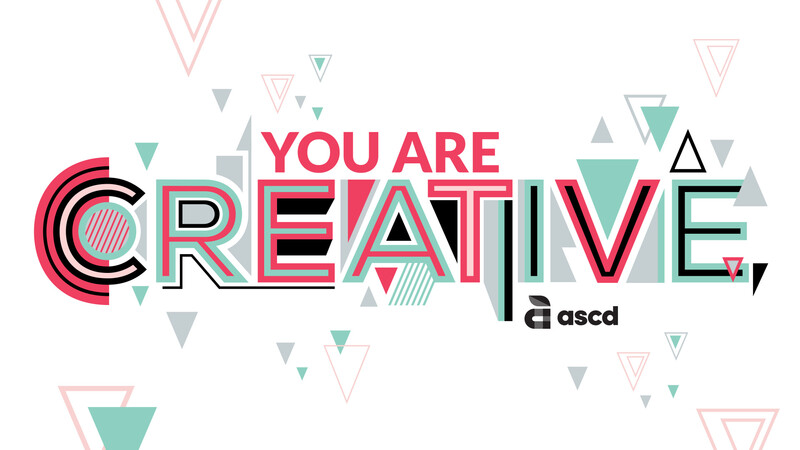
.css-191dech{margin-top:16px;margin-bottom:16px;display:-webkit-box;display:-webkit-flex;display:-ms-flexbox;display:flex;} .css-12z0wuy{margin-right:8px;} • .css-16w6vyg{margin:0;font-family:'Poppins',sans-serif;font-weight:400;font-size:0.875rem;line-height:1.43;font-size:1rem;font-weight:400;line-height:1.625rem;letter-spacing:0.2px;} 1 See, for example, Marzano, R. J., & Heflebower, T. (2012). Teaching and assessing 21st century skills . Bloomington, IN: Marzano Research Laboratory; Marzano, R. J. (2007). The art and science of teaching: A comprehensive framework for effective instruction . Alexandria, VA: ASCD.

Robert Marzano is the CEO of Marzano Research Laboratory in Centennial, CO, which provides research-based, partner-centered support for educators and education agencies—with the goal of helping teachers improve educational practice.
As strategic advisor, Robert brings over 50 years of experience in action-based education research, professional development, and curriculum design to Marzano Research. He has expertise in standards-based assessment, cognition, school leadership, and competency-based education, among a host of areas.
He is the author of 30 books, 150 articles and chapters in books, and 100 sets of curriculum materials for teachers and students in grades K–12.
ASCD is a community dedicated to educators' professional growth and well-being.
Let us help you put your vision into action., from our issue.
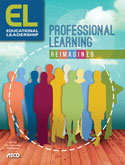
To process a transaction with a Purchase Order please send to [email protected]
Problem Solving Method Of Teaching

The problem-solving method of teaching is the learning method that allows children to learn by doing. This is because they are given examples and real-world situations so that the theory behind it can be understood better, as well as practice with each new concept or skill taught on top of what was previously learned in class before moving onto another topic at hand.
What is your preferred problem-solving technique?
Answers : - I like to brainstorm and see what works for me - I enjoy the trial and error method - I am a linear thinker
Share it with me by commenting.
For example, while solving a problem, the child may encounter terms he has not studied yet. These will further help him understand their use in context while developing his vocabulary. At the same time, being able to practice math concepts by tapping into daily activities helps an individual retain these skills better.
One way this type of teaching is applied for younger students particularly is through games played during lessons. By allowing them to become comfortable with the concepts taught through these games, they can put their knowledge into use later on. This is done by developing thinking processes that precede an action or behavior. These games can be used by teachers for different subjects including science and language.
For younger students still, the method of teaching using real-life examples helps them understand better. Through this, it becomes easier for them to relate what they learned in school with terms used outside of school settings so that the information sticks better than if all they were given were theoretical definitions. For instance, instead of just studying photosynthesis as part of biology lessons, children are asked to imagine plants growing inside a dark room because there is no sunlight present. When questioned about the plants, children will be able to recall photosynthesis more easily because they were able to see its importance in real life.
Despite being given specific examples, the act of solving problems helps students think for themselves. They learn how to approach situations and predict outcomes based on what they already know about concepts or ideas taught in class including the use of various skills they have acquired over time. These include problem-solving strategies like using drawings when describing a solution or asking advice if they are stuck to unlock solutions that would otherwise go beyond their reach.
Teachers need to point out in advance which method will be used for any particular lesson before having children engage with it. By doing this, individuals can prepare themselves mentally for what is to come. This is especially true for students who have difficulty with a particular subject. In these cases, the teacher can help them get started by providing a worked example for reference or breaking the problem down into manageable chunks that are easier to digest.
JIT (Just-in-Time): A Comprehensive Examination of its Strategic Impact
The Wisdom of Jefferson: Moving, Doing, Thinking
Root Cause Tree Analysis: Insights to Forensic Decision Making
Hazard Analysis: A Comprehensive Approach for Risk Evaluation
Ultimately, the goal of teaching using a problem-solving method is to give children the opportunity to think for themselves and to be able to do so in different contexts. Doing this helps foster independent learners who can utilize the skills they acquired in school for future endeavors.
The problem-solving method of teaching allows children to learn by doing. This is because they are given examples and real-world situations so that the theory behind it can be understood better, as practice with each new concept or skill taught on top of what was previously learned in class before moving onto another topic at hand.
One way this type of teaching is applied for younger students particularly is through games played during lessons. By allowing them to become comfortable with the concepts taught through these games, they are able to put their knowledge into use later on. This is done by developing thinking processes that precede an action or behavior. These games can be used by teachers for different subjects including science and language.
For instance, a teacher may ask students to imagine they are plants in a dark room because there is no sunlight present. When questioned about the plants, children will be able to recall photosynthesis more easily because they were able to see its importance in real life.
It is important for teachers to point out in advance which method will be used for any particular lesson before having children engage with it. By doing this, individuals can prepare themselves mentally for what is to come. This is especially true for students who have difficulty with a particular subject. In these cases, the teacher can help them get started by providing a worked example for reference or breaking the problem down into manageable chunks that are easier to digest.
lesson before having children engage with it. By doing this, individuals can prepare themselves mentally for what is to come. This is especially true for students who have difficulty with a particular subject. In these cases, the teacher can help them get started by providing a worked example for reference or breaking the problem down into manageable chunks that are easier to digest.
The teacher should have a few different ways to solve the problem.
For example, the teacher can provide a worked example for reference or break down the problem into chunks that are easier to digest.
The goal of teaching using a problem-solving method is to give children the opportunity to think for themselves and to be able to do so in different contexts. Successful problem solving allows children to become comfortable with concepts taught through games that develop thinking processes that precede an action or behavior.
Introduce the problem
The problem solving method of teaching is a popular approach to learning that allows students to understand new concepts by doing. This approach provides students with examples and real-world situations, so they can see how the theory behind a concept or skill works in practice. In addition, students are given practice with each new concept or skill taught, before moving on to the next topic. This helps them learn and retain the information better.
Explain why the problem solving method of teaching is effective.
The problem solving method of teaching is effective because it allows students to learn by doing. This means they can see how the theory behind a concept or skill works in practice, which helps them understand and remember the information better. This would not be possible if they are only told about the new concept or skill, or read a textbook to learn on their own. Since students can see how the theory works in practice through examples and real-world situations, the information is easier for them to understand.
List some advantages of using the problem solving method of teaching.
Some advantages of using the problem solving method of teaching are that it helps students retain information better since they are able to practice with each new concept or skill taught until they master it before moving on to another topic. This also allows them to learn by doing so they will have hands-on experience with facts which helps them remember important facts faster rather than just hearing about it or reading about it on their own. Furthermore, this teaching method is beneficial for students of all ages and can be adapted to different subjects making it an approach that is versatile and easily used in a classroom setting. Lastly, the problem solving method of teaching presents new information in a way that is easy to understand so students are not overwhelmed with complex material.
The problem solving method of teaching is an effective way for students to learn new concepts and skills. By providing them with examples and real-world situations, they can see how the theory behind a concept or skill works in practice. In addition, students are given practice with each new concept or skill taught, before moving on to the next topic. This them learn and retain the information better.
What has been your experience with adopting a problem-solving teaching method?
How do you feel the usefulness of your lesson plans changed since adopting this method?
What was one of your most successful attempts in using this technique to teach students, and why do you believe it was so successful?
Were there any obstacles when trying to incorporate this technique into your class?
Did it take a while for all students to get used to the new type of teaching style before they felt comfortable enough to participate in discussions and ask questions about their newly acquired knowledge?
What are your thoughts on this method?
“I have had the opportunity to work in several districts, including one where they used problem solving for all subjects. I never looked back after that experience--it was exciting and motivating for students and teachers alike."
"The problem solving method of teaching is great because it makes my subject matter more interesting with hands-on activities."
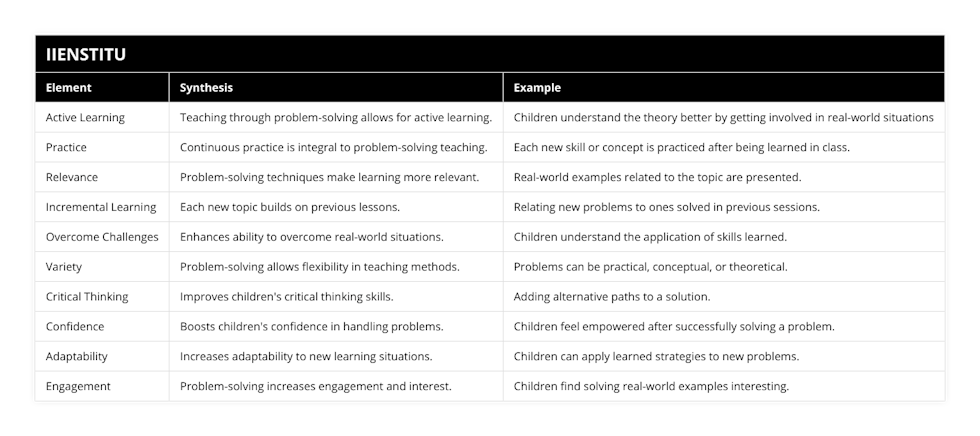
What is the role of educators in facilitating problem-solving method of teaching?
Role of Educators in Facilitating Problem-Solving Understanding the Problem-Solving Method The problem-solving method of teaching encourages students to actively engage their critical thinking skills to analyze and seek solutions to real-world problems. As such, educators play a crucial part in facilitating this learning style to ensure the effective attainment of desired skills. Encouraging Collaboration and Communication One of the ways educators can facilitate problem-solving is by promoting collaboration and communication among students. Working as a team allows students to share diverse perspectives while considering multiple solutions, thereby fostering an open-minded and inclusive environment that is crucial for effective problem-solving. Creating a Safe Space for Failure Educators must recognize that failure is an integral component of the learning process in a problem-solving method. By establishing a safe environment that allows students to fail without facing judgment or embarrassment, teachers enable students to develop perseverance, resilience, and an enhanced ability to learn from mistakes. Designing Relevant and Engaging Problems The selection and design of appropriate problems contribute significantly to the success of the problem-solving method of teaching. Educators should focus on presenting issues that are relevant, engaging, and age-appropriate, thereby sparking curiosity and interest amongst students, which further improves their problem-solving abilities. Scaffolding Learning Scaffolding is essential in the problem-solving method for providing adequate support when required. Teachers need to break down complex problems into smaller, manageable steps, and gradually remove support as students develop the necessary skills, thus promoting their self-reliance and independent thinking. Providing Constructive Feedback Constructive feedback from educators is invaluable in facilitating the problem-solving method of teaching, as it enables students to reflect on their progress, recognize areas for improvement, and actively develop their critical thinking and problem-solving abilities. In conclusion, the role of educators in facilitating the problem-solving method of teaching comprises promoting collaboration, creating a safe space for failure, designing relevant problems, scaffolding learning, and providing constructive feedback. By integrating these elements, educators can help students develop essential life-long skills and effectively navigate the complex world they will experience.
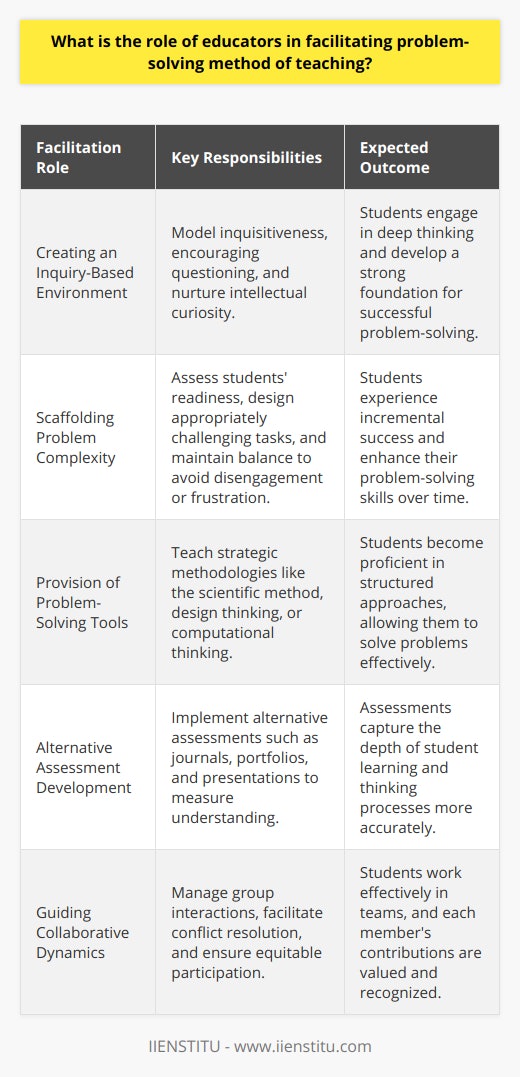
Can interdisciplinary approaches be incorporated into problem-solving teaching methods, and if so, how?
Interdisciplinary Approaches in Problem-Solving Teaching Methods Integration of Interdisciplinary Approaches Incorporating interdisciplinary approaches into problem-solving teaching methods can be achieved by integrating various subject areas when presenting complex problems that require students to draw from different fields of knowledge. By doing so, learners will develop a deeper understanding of the interconnectedness of various disciplines and improve their problem-solving skills. Project-Based Learning Activities Implementing project-based learning activities in the classroom allows students to work collaboratively on real-world problems. By involving learners in tasks that necessitate the integration of diverse subjects, they develop the ability to transfer skills acquired in one context to novel situations, thereby expanding their problem-solving abilities. Role of Teachers in Interdisciplinary Teaching Teachers play a crucial role in the successful incorporation of interdisciplinary methods in problem-solving teaching. They must be prepared to facilitate student-centered learning and engage in ongoing professional development tailored towards interdisciplinary education. In doing so, educators can create inclusive learning environments that encourage individualized discovery and the application of diverse perspectives to solve complex problems. Benefits of Interdisciplinary Teaching Methods Adopting interdisciplinary teaching methods in problem-solving education not only enhances students' problem-solving abilities but also fosters the development of critical thinking, creativity, and collaboration. These essential skills enable learners to navigate and adapt to an increasingly interconnected world and have been shown to contribute to students' academic and professional success. In conclusion, incorporating interdisciplinary approaches into problem-solving teaching methods can be achieved through the integration of various subject areas, implementing project-based learning activities, and the active role of teachers in interdisciplinary education. These methods benefit students by developing problem-solving skills, critical thinking, creativity, and collaboration, preparing them for future success in an interconnected world.
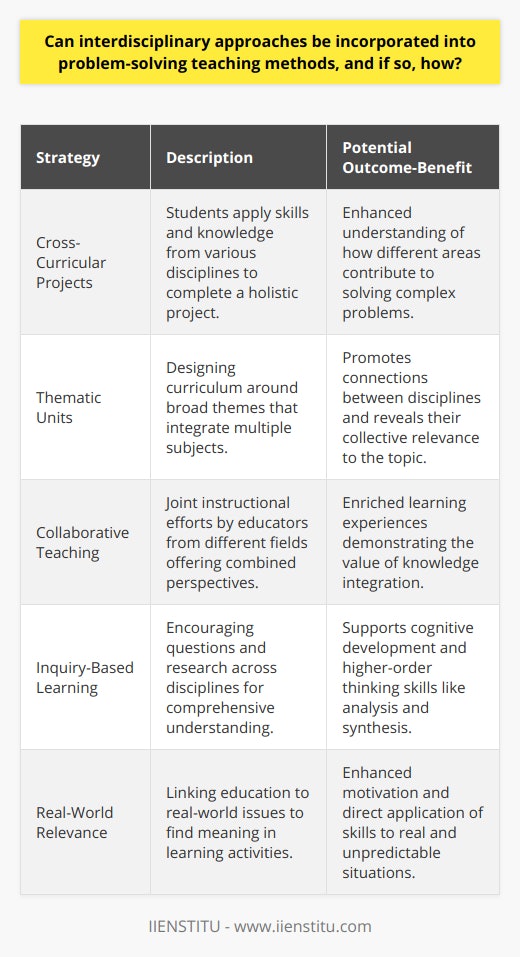
In what ways can technology be integrated into the problem-solving method of instruction?
**Role of Technology in Problem-Solving Instruction** Technology can be integrated into the problem-solving method of instruction by enhancing student engagement, promoting collaboration, and supporting personalized learning. **Enhancing Student Engagement** One way technology supports the problem-solving method is by increasing students' interest through interactive and dynamic tools. For instance, digital simulations and educational games can help students develop critical thinking and problem-solving skills in a fun, engaging manner. These tools provide real-world contexts and immediate feedback, allowing students to experiment, take risks, and learn from their mistakes. **Promoting Collaboration** Technology also promotes collaboration among students, as online platforms facilitate communication and cooperation. Utilizing tools like video conferencing and shared workspaces, students can collaborate on group projects, discuss ideas, and solve problems together. This collaborative approach fosters a sense of community, mutual support, and collective problem-solving. Moreover, it helps students develop essential interpersonal skills, such as teamwork and communication, which are crucial in today's workplaces. **Supporting Personalized Learning** Finally, technology can be used to provide personalized learning experiences tailored to individual learners' needs, interests, and abilities. With access to adaptive learning platforms or online resources, students can progress at their own pace, focus on areas where they need improvement, and explore topics that interest them. This kind of personalized approach allows instructors to identify areas where students struggle and offer targeted support, enhancing the problem-solving learning experience. In conclusion, integrating technology into the problem-solving method of instruction can improve the learning process in various ways. By fostering student engagement, promoting collaboration, and facilitating personalized learning experiences, technology can be employed as a valuable resource to develop students' problem-solving skills effectively.
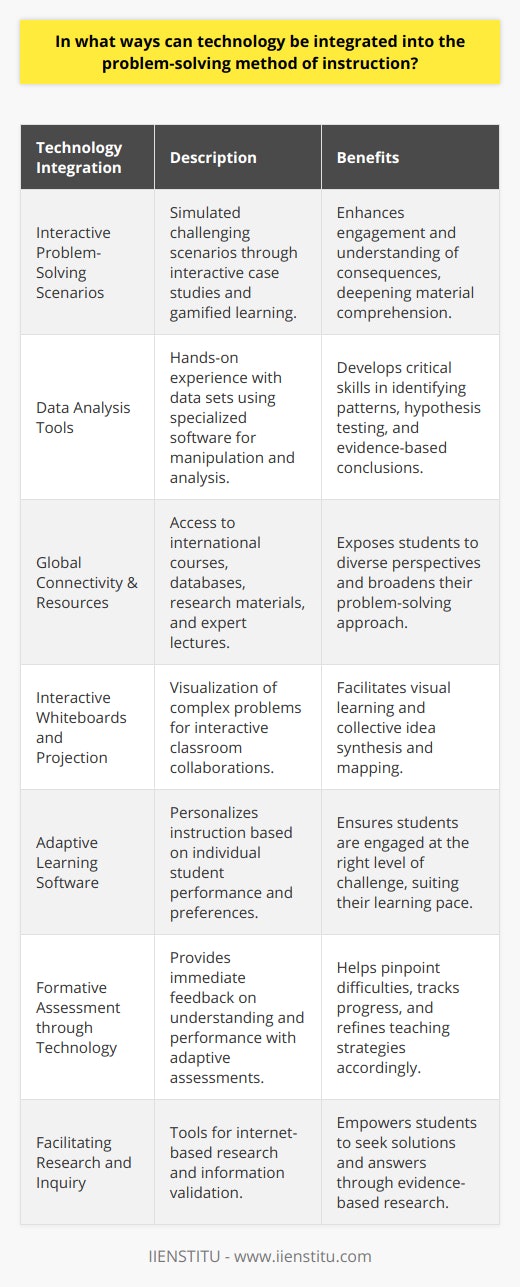
I graduated from the Family and Consumption Sciences Department at Hacettepe University. I hold certificates in blogging and personnel management. I have a Master's degree in English and have lived in the US for three years.
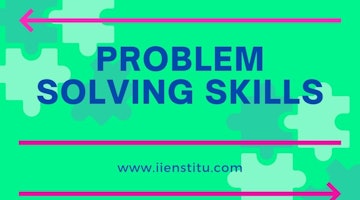
What are Problem Solving Skills?

How To Solve The Problems? Practical Problem Solving Skills

A Problem Solving Method: Brainstorming

How To Develop Problem Solving Skills?
- Our Mission
6 Tips for Teaching Math Problem-Solving Skills
Solving word problems is tougher than computing with numbers, but elementary teachers can guide students to do the deep thinking involved.

A growing concern with students is the ability to problem-solve, especially with complex, multistep problems. Data shows that students struggle more when solving word problems than they do with computation , and so problem-solving should be considered separately from computation. Why?
Consider this. When we’re on the way to a new destination and we plug in our location to a map on our phone, it tells us what lane to be in and takes us around any detours or collisions, sometimes even buzzing our watch to remind us to turn. When I experience this as a driver, I don’t have to do the thinking. I can think about what I’m going to cook for dinner, not paying much attention to my surroundings other than to follow those directions. If I were to be asked to go there again, I wouldn’t be able to remember, and I would again seek help.
If we can switch to giving students strategies that require them to think instead of giving them too much support throughout the journey to the answer, we may be able to give them the ability to learn the skills to read a map and have several ways to get there.
Here are six ways we can start letting students do this thinking so that they can go through rigorous problem-solving again and again, paving their own way to the solution.
1. Link problem-solving to reading
When we can remind students that they already have many comprehension skills and strategies they can easily use in math problem-solving, it can ease the anxiety surrounding the math problem. For example, providing them with strategies to practice, such as visualizing, acting out the problem with math tools like counters or base 10 blocks, drawing a quick sketch of the problem, retelling the story in their own words, etc., can really help them to utilize the skills they already have to make the task less daunting.
We can break these skills into specific short lessons so students have a bank of strategies to try on their own. Here's an example of an anchor chart that they can use for visualizing . Breaking up comprehension into specific skills can increase student independence and help teachers to be much more targeted in their problem-solving instruction. This allows students to build confidence and break down the barriers between reading and math to see they already have so many strengths that are transferable to all problems.
2. Avoid boxing students into choosing a specific operation
It can be so tempting to tell students to look for certain words that might mean a certain operation. This might even be thoroughly successful in kindergarten and first grade, but just like when our map tells us where to go, that limits students from becoming deep thinkers. It also expires once they get into the upper grades, where those words could be in a problem multiple times, creating more confusion when students are trying to follow a rule that may not exist in every problem.
We can encourage a variety of ways to solve problems instead of choosing the operation first. In first grade, a problem might say, “Joceline has 13 stuffed animals and Jordan has 17. How many more does Jordan have?” Some students might choose to subtract, but a lot of students might just count to find the amount in between. If we tell them that “how many more” means to subtract, we’re taking the thinking out of the problem altogether, allowing them to go on autopilot without truly solving the problem or using their comprehension skills to visualize it.
3. Revisit ‘representation’
The word “representation” can be misleading. It seems like something to do after the process of solving. When students think they have to go straight to solving, they may not realize that they need a step in between to be able to support their understanding of what’s actually happening in the problem first.
Using an anchor chart like one of these ( lower grade , upper grade ) can help students to choose a representation that most closely matches what they’re visualizing in their mind. Once they sketch it out, it can give them a clearer picture of different ways they could solve the problem.
Think about this problem: “Varush went on a trip with his family to his grandmother’s house. It was 710 miles away. On the way there, three people took turns driving. His mom drove 214 miles. His dad drove 358 miles. His older sister drove the rest. How many miles did his sister drive?”
If we were to show this student the anchor chart, they would probably choose a number line or a strip diagram to help them understand what’s happening.
If we tell students they must always draw base 10 blocks in a place value chart, that doesn’t necessarily match the concept of this problem. When we ask students to match our way of thinking, we rob them of critical thinking practice and sometimes confuse them in the process.
4. Give time to process
Sometimes as educators, we can feel rushed to get to everyone and everything that’s required. When solving a complex problem, students need time to just sit with a problem and wrestle with it, maybe even leaving it and coming back to it after a period of time.
This might mean we need to give them fewer problems but go deeper with those problems we give them. We can also speed up processing time when we allow for collaboration and talk time with peers on problem-solving tasks.
5. Ask questions that let Students do the thinking
Questions or prompts during problem-solving should be very open-ended to promote thinking. Telling a student to reread the problem or to think about what tools or resources would help them solve it is a way to get them to try something new but not take over their thinking.
These skills are also transferable across content, and students will be reminded, “Good readers and mathematicians reread.”
6. Spiral concepts so students frequently use problem-solving skills
When students don’t have to switch gears in between concepts, they’re not truly using deep problem-solving skills. They already kind of know what operation it might be or that it’s something they have at the forefront of their mind from recent learning. Being intentional within their learning stations and assessments about having a variety of rigorous problem-solving skills will refine their critical thinking abilities while building more and more resilience throughout the school year as they retain content learning in the process.
Problem-solving skills are so abstract, and it can be tough to pinpoint exactly what students need. Sometimes we have to go slow to go fast. Slowing down and helping students have tools when they get stuck and enabling them to be critical thinkers will prepare them for life and allow them multiple ways to get to their own destination.
- Skip to main content
- Skip to secondary menu
- Skip to primary sidebar
- Skip to secondary sidebar

TechBeamers
Tutorials for Beginners to Learn Python, Java, Selenium, C Programming, CSharp, SQL, Linux, Agile, and Software Testing
Problem-Solving Method of Teaching: All You Need to Know
Nov 28, 2023 by Harsh S. Leave a Comment
Ever wondered about the problem-solving method of teaching? We’ve got you covered, from its core principles to practical tips, benefits, and real-world examples.
The problem-solving method of teaching is a student-centered approach to learning that focuses on developing students’ problem-solving skills. In this method, students are presented with real-world problems to solve, and they are encouraged to use their own knowledge and skills to come up with solutions. The teacher acts as a facilitator, providing guidance and support as needed, but ultimately the students are responsible for finding their own solutions.
Problem-Solving Method of Teaching – Agenda of the Day
5 most important benefits of problem-solving method of teaching, find out examples of the problem-solving method of teaching, 5 how tos for using the problem-solving method of teaching, how to choose: let’s draw a comparison.
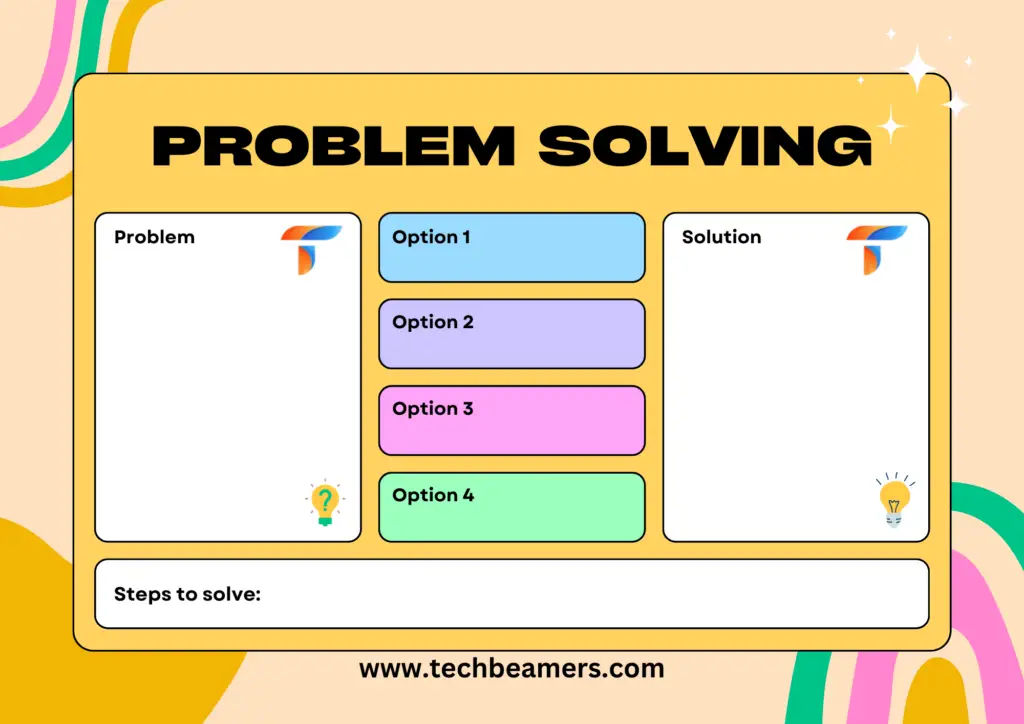
Must Read: How to Tell Me About Yourself in an Interview
The new way of teaching primarily helps students develop critical thinking skills and real-world application abilities. It also promotes independence and self-confidence in problem-solving.
The problem-solving method of teaching has a number of benefits. It helps students to:
1. Enhances critical thinking: By presenting students with real-world problems to solve, the problem-solving method of teaching forces them to think critically about the situation and to come up with their own solutions. This process helps students to develop their critical thinking skills, which are essential for success in school and in life.
2. Fosters creativity: The problem-solving method of teaching encourages students to be creative in their approach to solving problems. There is often no one right answer to a problem, so students are free to come up with their own unique solutions. This process helps students to develop their creativity, which is an important skill in all areas of life.
3. Encourages real-world application: The problem-solving method of teaching helps students learn how to apply their knowledge to real-world situations. By solving real-world problems, students are able to see how their knowledge is relevant to their lives and to the world around them. This helps students to become more motivated and engaged learners.
4. Builds student confidence: When students are able to successfully solve problems, they gain confidence in their abilities. This confidence is essential for success in all areas of life, both academic and personal.
5. Promotes collaborative learning: The problem-solving method of teaching often involves students working together to solve problems. This collaborative learning process helps students to develop their teamwork skills and to learn from each other.
Know 6 Steps in the Problem-Solving Method of Teaching
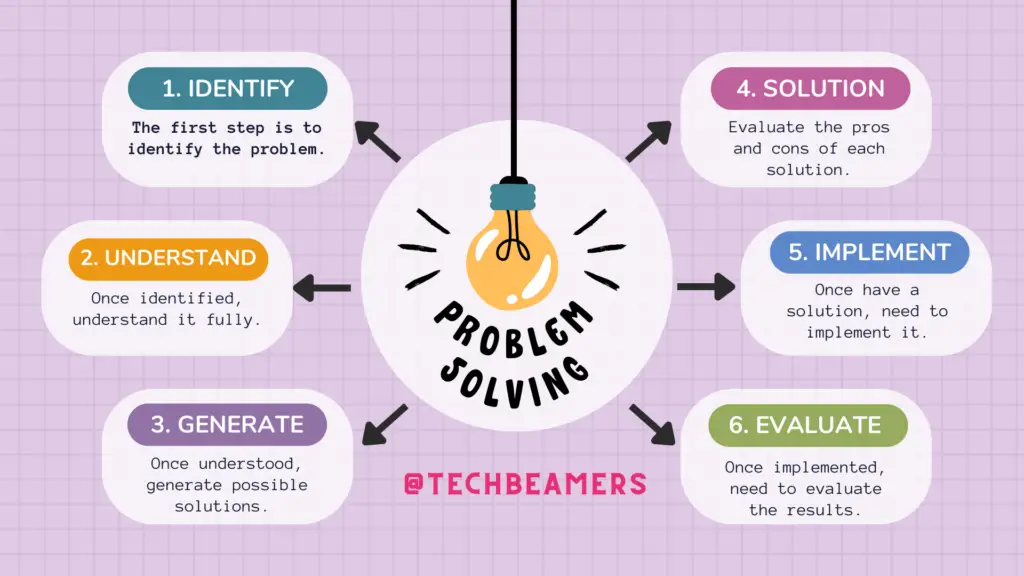
Also Read: Do You Know the Difference Between ChatGPT and GPT-4?
The problem-solving method of teaching typically involves the following steps:
- Identifying the problem. The first step is to identify the problem that students will be working on. This can be done by presenting students with a real-world problem, or by asking them to come up with their own problems.
- Understanding the problem. Once students have identified the problem, they need to understand it fully. This may involve breaking the problem down into smaller parts or gathering more information about the problem.
- Generating solutions. Once students understand the problem, they need to generate possible solutions. This can be done by brainstorming, or by using problem-solving techniques such as root cause analysis or the decision matrix.
- Evaluating solutions. Students need to evaluate the pros and cons of each solution before choosing one to implement.
- Implementing the solution. Once students have chosen a solution, they need to implement it. This may involve taking action or developing a plan.
- Evaluating the results. Once students have implemented the solution, they need to evaluate the results to see if it was successful. If the solution is not successful, students may need to go back to step 3 and generate new solutions.
Here are a few examples of how the problem-solving method of teaching can be used in different subjects:
- Math: Students could be presented with a real-world problem such as budgeting for a family or designing a new product. Students would then need to use their math skills to solve the problem.
- Science: Students could be presented with a science experiment, or asked to research a scientific topic and come up with a solution to a problem. Students would then need to use their science knowledge and skills to solve the problem.
- Social studies: Students could be presented with a historical event or current social issue, and asked to come up with a solution. Students would then need to use their social studies knowledge and skills to solve the problem.
Here are a few tips for using the problem-solving method of teaching effectively:
- Choose problems that are relevant to students’ lives and interests.
- Make sure that the problems are challenging but achievable.
- Provide students with the resources they need to solve the problems, such as books, websites, or experts.
- Encourage students to work collaboratively and to share their ideas.
- Be patient and supportive. Problem-solving can be a challenging process, but it is also a rewarding one.
Also Try: 1-10 Random Number Generator
The following table compares the different problem-solving methods:
Which Method is the Most Suitable?
The most suitable method of teaching will depend on a number of factors, such as the subject matter, the student’s age and ability level, and the teacher’s own preferences. However, the problem-solving method of teaching is a valuable approach that can be used in any subject area and with students of all ages.
Here are some additional tips for using the problem-solving method of teaching effectively:
- Differentiate instruction. Not all students learn at the same pace or in the same way. Teachers can differentiate instruction to meet the needs of all learners by providing different levels of support and scaffolding.
- Use formative assessment. Formative assessment can be used to monitor students’ progress and to identify areas where they need additional support. Teachers can then use this information to provide students with targeted instruction.
- Create a positive learning environment. Students need to feel safe and supported in order to learn effectively. Teachers can create a positive learning environment by providing students with opportunities for collaboration, celebrating their successes, and creating a classroom culture where mistakes are seen as learning opportunities.
Interested in New Tech: 7 IoT Trends to Watch in 2023
Some Unique Examples to Refer to Before We Conclude
Here are a few unique examples of how the problem-solving method of teaching can be used in different subjects:
- English: Students could be presented with a challenging text, such as a poem or a short story, and asked to analyze the text and come up with their own interpretation.
- Art: Students could be asked to design a new product or to create a piece of art that addresses a social issue.
- Music: Students could be asked to write a song about a current event or to create a new piece of music that reflects their cultural heritage.
The problem-solving method of teaching is a powerful tool that can be used to help students develop the skills they need to succeed in school and in life. By creating a learning environment where students are encouraged to think critically and solve problems, teachers can help students to become lifelong learners.
Reader Interactions
Leave a reply.
Your email address will not be published. Required fields are marked *
Aurora Beacon-News | Problem-solving, critical thinking on display…
Share this:.
- Click to share on Facebook (Opens in new window)
- Click to share on X (Opens in new window)
- Click to print (Opens in new window)
- Click to email a link to a friend (Opens in new window)
- Aurora Beacon-News Sports
- Aurora Beacon-News Opinion
- All Suburbs
Aurora Beacon-News
Aurora beacon-news | problem-solving, critical thinking on display at robotics event at aurora municipal airport.

Robots and the kids that built and operated them took center stage all day Friday at the Aurora Municipal Airport in Sugar Grove as 17 students 9 to 16 years old squared off in a competition during the first-ever Elite Robotics Camp, hosted by the U.S. Engineering League and the Wong Center for Education.
The Friday showcase was the culmination of a week-long camp program that included four days of workshops held at the Hampton Inn in Aurora.
A press release issued by the robotics camp said the 17 students involved spent time with a variety of national champions from multiple countries under Anthony Hsu of OFDL Robotics Lab Taiwan, “one of the world’s most accomplished coaches.”
Susan Mackafey, publicist for the Robotics group, said the event in Aurora came about as a result of the competitions that the Wong group hosts worldwide. William Wong, the founder of the Wong Center for Education, is the national organizer for the World Robot Olympiad, according to a press release.
“There were some students from Ukraine and Kazakhstan wondering if there would be any other kind of competitions as they wanted to hone their skills with one of the experts,” she said. “Will Wong ran with it, and has arranged the camp and the competition going on this Friday.”
Two of the camp members from Ukraine – Margo Proutorbva and Sofia Sova – were sponsored by the Wong Center for Education.
“It’s been an emotional trip for them,” Mackafey said, given the war going on in their homeland. “A lot of the kids are looking to train and do this as their careers and they love to compete. There are various levels of this competition that take place on a global scale.”
Local students were on hand as well, some of whom are being sponsored by the Wong Foundation, sources said.
Wong, of Naperville, was supervising Friday at the airport facility and said he started a robotics program with kids back in 2008.
“STEM has become a lot of the focus,” Wong said. “Even before I started, STEM was a big word. Engineering coding has always been there. It’s just how can we have kids do more of it. What’s happened is there are education companies like LEGO and other companies that have built robots that allow us to teach kids robotics in an easy fashion and we can create real world challenges off those robots so they literally are engineering, building and creating, designing and working with teams to have robots do tasks.”
Other than the collaborative learning, Wong said the biggest takeaways of the program “are problem-solving, figuring out how to make things work, a lot of trial-and-error, analysis and critical thinking.”
“There is teamwork, but the biggest is perseverance and working through the problems,” he said. “If the robot doesn’t work the first time or the second time or the 100th time, they are truly going through the engineering process – building, design and the whole cycle.”

Margo Proutorbva, 14, spoke about robotics and said through an interpreter she got interested in them two years ago.
“I’ve learned to assemble them,” she said. “The most difficult part of this has been when you assemble a robot with someone else – it’s way easier when you do it on your own. My robot can grab different objects, follow lines and turn in different ways.”
David Sharos is a freelance reporter for The Beacon-News.
More in Aurora Beacon-News

Aurora Beacon-News Sports | After winning nationals, Wisconsin-bound Patrick Hilby wants more for Aurora Central Catholic. ‘A prizefighter, man.’

Aurora Beacon-News | Sky’s the limit at Easter egg hunt at Aurora church

Column: Oswego dad’s grief after loss of son leads to Ronald McDonald House and new book

Aurora Beacon-News | Task force meets to begin its work to look at impact of potential dam removal in St. Charles
Trending nationally.
- Continuing Coverage: Key Bridge collapse in Baltimore
- Some of Florida’s sickest kids are losing Medicaid coverage on Easter Sunday
- Skiboky Stora, accused of attacking NYC TikToker, goes on unhinged rant in court
- White-collar crimes: Sam Bankman-Fried’s sentence is double Elizabeth Holmes’
- Conjoined twin, former TLC star Abby Hensel now married to Army veteran

IMAGES
VIDEO
COMMENTS
The problem-solving method is an effective teaching strategy that promotes critical thinking, creativity, and collaboration. It provides students with real-world problems that require them to apply their knowledge and skills to find solutions. By using the problem-solving method, teachers can help their students develop the skills they need to ...
The mathematician George Polya captured the problem solving principles and strategies he used in his discipline in the book How to Solve It: A New Aspect of Mathematical Method(Princeton University Press, 1957). The book includes a summary of Polya's problem solving heuristic as well as advice on the teaching of problem solving.
Model a useful problem-solving method. Problem solving can be difficult and sometimes tedious. Show students how to be patient and persistent, and how to follow a structured method, such as Woods' model described below. ... One key aspect in problem solving is teaching students how to select, interpret, and use units and symbols. Emphasize ...
PBL is a student-centered approach to learning that involves groups of students working to solve a real-world problem, quite different from the direct teaching method of a teacher presenting facts and concepts about a specific subject to a classroom of students. Through PBL, students not only strengthen their teamwork, communication, and ...
Problem-Based Learning (PBL) is a teaching method in which complex real-world problems are used as the vehicle to promote student learning of concepts and principles as opposed to direct presentation of facts and concepts. In addition to course content, PBL can promote the development of critical thinking skills, problem-solving abilities, and ...
Working on solutions. In the solution phase, one develops and then implements a coherent plan for solving the problem. As you help students with this phase, you might ask them to: identify the general model or procedure they have in mind for solving the problem. set sub-goals for solving the problem. identify necessary operations and steps.
Problem-based learning (PBL) is a student-centered approach in which students learn about a subject by working in groups to solve an open-ended problem. ... Problem solving across disciplines. Considerations for Using Problem-Based Learning. Rather than teaching relevant material and subsequently having students apply the knowledge to solve ...
Problem solving is a necessary skill in all disciplines and one that the Sheridan Center is focusing on as part of the Brown Learning Collaborative, which provides students the opportunity to achieve new levels of excellence in six key skills traditionally honed in a liberal arts education - critical reading, writing, research, data ...
Teaching about problem solving begins with suggested strategies to solve a problem. For example, "draw a picture," "make a table," etc. You may see posters in teachers' classrooms of the "Problem Solving Method" such as: 1) Read the problem, 2) Devise a plan, 3) Solve the problem, and 4) Check your work. There is little or no ...
Teaching problem solving: Let students get 'stuck' and 'unstuck'. This is the second in a six-part blog series on teaching 21st century skills, including problem solving , metacognition ...
1. Introduction. The focus of this paper is on understanding and explaining pedagogical problem solving. This theoretical paper builds on two previous studies (Riordan, Citation 2020; and Riordan, Hardman and Cumbers, Citation 2021) by introducing an 'extended Pedagogy Analysis Framework' and a 'Pedagogical Problem Typology' illustrating both with examples from video-based analysis of ...
Problem-solving is the ability to identify and solve problems by applying appropriate skills systematically. Problem-solving is a process—an ongoing activity in which we take what we know to discover what we don't know. It involves overcoming obstacles by generating hypo-theses, testing those predictions, and arriving at satisfactory solutions.
The problem-solving method involves three basic functions Woods' problem-solving model Identify the problem Think about it Plan a solution Carry out the plan Look back Other tips include Ask Open-Ended Questions Emphasize Process Over Product Model The Strategies Encourage Grappling Make problem resolution relevant to the lives of your students.
Abstract. Problem-based learning is a recognized teaching method in which complex real-world problems are used as the vehicle to promote student learning of concepts and principles as opposed to ...
Credit: 2021. Abstract. Step 1: Determine whether you have a problem and whether it's worth solving. Step 2: Affirm positive beliefs regarding your ability to solve the problem. Step 3: Clarify the obstacle and identify possible solutions. Step 4: Determine each solution's likelihood of success and consider the resources required.
The problem solving method of teaching is a popular approach to learning that allows students to understand new concepts by doing. This approach provides students with examples and real-world situations, so they can see how the theory behind a concept or skill works in practice. In addition, students are given practice with each new concept or ...
Finding a suitable solution for issues can be accomplished by following the basic four-step problem-solving process and methodology outlined below. Step. Characteristics. 1. Define the problem. Differentiate fact from opinion. Specify underlying causes. Consult each faction involved for information. State the problem specifically.
While slower in solving problems, experts use this additional up-front time to more efficiently and effectively solve the problem. In one study, researchers found that experts were much better at "information extraction" or pulling the information they needed to solve the problem later in the problem than novices. This was due to the fact that they started a problem-solving process by ...
1. Link problem-solving to reading. When we can remind students that they already have many comprehension skills and strategies they can easily use in math problem-solving, it can ease the anxiety surrounding the math problem. For example, providing them with strategies to practice, such as visualizing, acting out the problem with math tools ...
Problem-based learning is a teaching method in which students' learn through the complex and open ended ... It can develop critical thinking skill, problem solving abilities, communication skills and lifelong learning. The purpose of this study is to give the general idea of PBL in the context of language learning, as PBL has expanded in the ...
The problem-solving method of teaching is a student-centered approach to learning that focuses on developing students' problem-solving skills. In this method, students are presented with real-world problems to solve, and they are encouraged to use their own knowledge and skills to come up with solutions. The teacher acts as a facilitator ...
Dewey's problem solving is the general teaching method in education. It is a significant part of learning theory. It is the design of applied research in educa tion. It is the scientific method. This makes one wonder what other claims could be made in its name. Questions Should Be Raised Undoubtedly the applications of Dew
What is the problem solving method of teaching? Luther A. Mahan, Luther A. Mahan. Stout State University, Menomonie, Wisconsin. Search for more papers by this author. Luther A. Mahan, Luther A. Mahan. Stout State University, Menomonie, Wisconsin. Search for more papers by this author.
What is the problem solving method of teaching? Luther A. Mahan, Luther A. Mahan. Stout State University, Menomonie, Wisconsin. Search for more papers by this author. Luther A. Mahan, Luther A. Mahan. Stout State University, Menomonie, Wisconsin. Search for more papers by this author.
The study method entails two main factors, purpose and the research synthesis process of the study. This study aims to explore the understanding and awareness of the teachers and students about STEM education; the challenges faced by them and their solutions in the light of literature review and research amalgamation and the abilities and skills to overcome these challenges.
10 Creative Problem-solving Techniques. 1. Brainstorming. Brainstorming remains a classic method for rapidly generating a plethora of ideas, creating an atmosphere devoid of judgment. This technique can be used individually or in a group setting, and it can help you generate a wide range of potential solutions to a problem.
Problem-solving, critical thinking on display at robotics event at Aurora Municipal Airport. Students from 9 to 16 years old participated in the Elite Robotics Camp in Aurora which included a ...